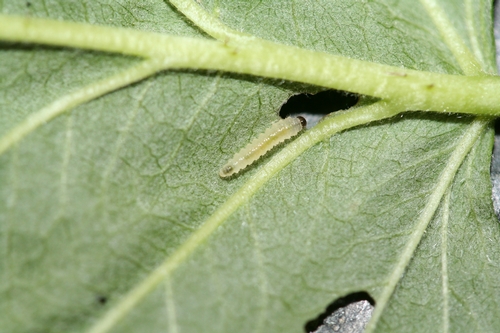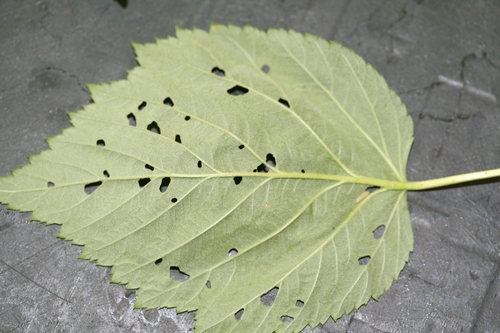The following is regarding a sample of raspberry sawfly submitted to this office this afternoon. This sawfly, very likely Monophadnoides geniculatus, is not that common on the Central Coast but the infestation described to me was sort of acute.
As one can see from the photos below, the larvae of the raspberry sawfly are rather bristly and run around 10 to 13 millimeters in length. The damage is distinctive, consisting of a patchwork of holes on infested leaves. The literature describes leaves being skeletonized by raspberry sawfly feeding, but I have yet to see anything as severe here.
The important part for growers and consultants to know is that raspberry sawfly is a wasp, not a moth or fly. It belongs to the family Tenthredinidae in the insect order Hymenoptera, which derive the common name of sawflies from the ovipositor of the females which is adapted for sawing. The female raspberry sawfly inserts her eggs into the leaves in May, and the larvae emerge obviously right around now. They feed for two to three weeks after which they drop to the ground to form a cocoon, from which the adult emerges the following year in the spring. There is only one generation per year.
From a pest management point of view on the Central Coast, the incidental damage we see on the leaves will not harm the plant and by any measure the damage is short lived and limited to the two to three week feeding period. However, growers who are concerned about incidental contamination of the harvested fruit from a medium to heavy raspberry sawfly infestation may want to treat.
Thanks to the PCA and his apprentice for bringing these samples by the office this afternoon. It really helps me keep current on what is going on out there.
Attached Images:

